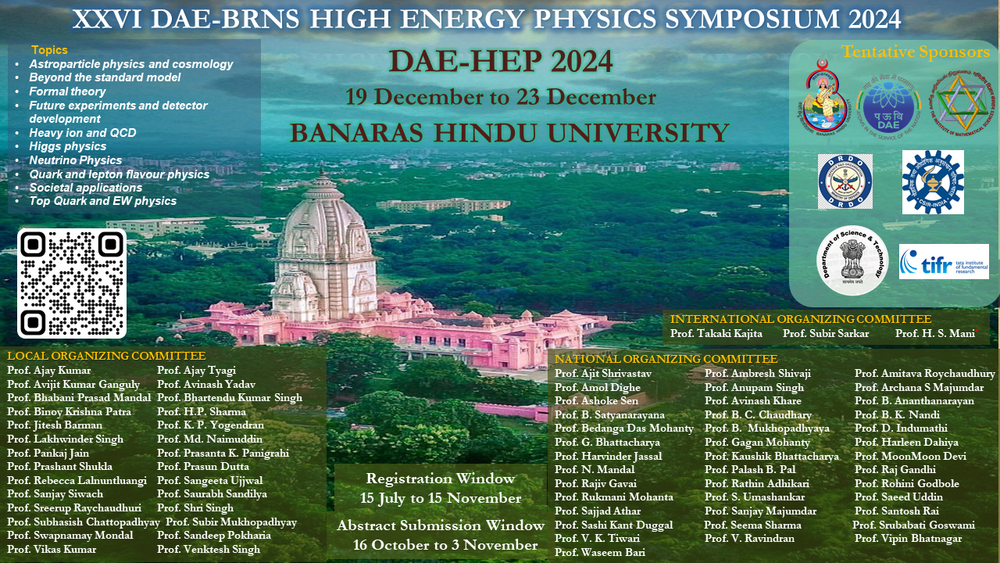Speaker
Description
One of the outstanding questions in studies of the QCD phase diagram
is to determine the order of the QCD phase transition and, in case it
turns out to be second order, determine the underlying universality class
that controls its universal critical behavior in the vicinity of chiral phase transition temperature $T_c$ . Previous works estimate this $T_c$
by extrapolating pseudo-critical temperatures obtained at non-zero values
of the light quark masses from maxima in the chiral susceptibilities
or the inflection point of the relevant, suitably renormalized, order
parameter i.e. the 2-flavor light-quark chiral condensate $M_l$.
In order to extrapolate the thus obtained pseudo-critical temperatures to
the chiral limit one however, generally makes use of information and
properties of the associated universality class in the form of critical
exponents and scaling functions.
In this work we aim to study as a function of T, the behavior of an improved,
renormalized 2-flavor light chiral condensate M which is obtained as
$M = M_l - H \chi_l$, with the light quark chiral susceptibility $\chi_l$
and the light-to-strange quark mass ratio $H = m_l/m_s$. Aside from having
no additive and multiplicative divergences as well as no $\mathcal{O}(H)$ regular terms,
the thus defined order parameter has the advantage that its behavior at
small values of the quark masses is related to a universal scaling function.
This allows to extract information on the underlying universality class.
We construct the ratio of M for two different values m_l (or H). Within the
scaling region around $T_c$ , we observe a unique intersection point for this
ratio for different values of smaller-than-physical $m_l$. This common point
of intersection provides a determination of $T_c$ and the critical exponent
$\delta$ without the need of referring to a particular universality class.
This approach followed here will allow to constrain the influence of the
axial anomaly on universal critical behavior in (2+1)-flavor QCD and will
also help to further constrain the quark mass region in which a first order
phase transition in 3-flavor QCD may arise. This will require careful
extrapolations to the continuum limit. At present in this new work, we
attempt to demonstrate the suitability of this approach in the framework
of (2+1)-flavor QCD on lattices with fixed temporal extent $N_t = 8$.
| Field of contribution | Theory |
|---|

